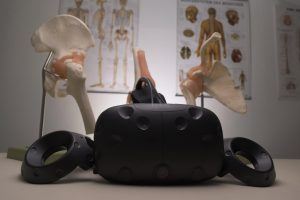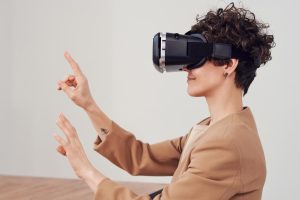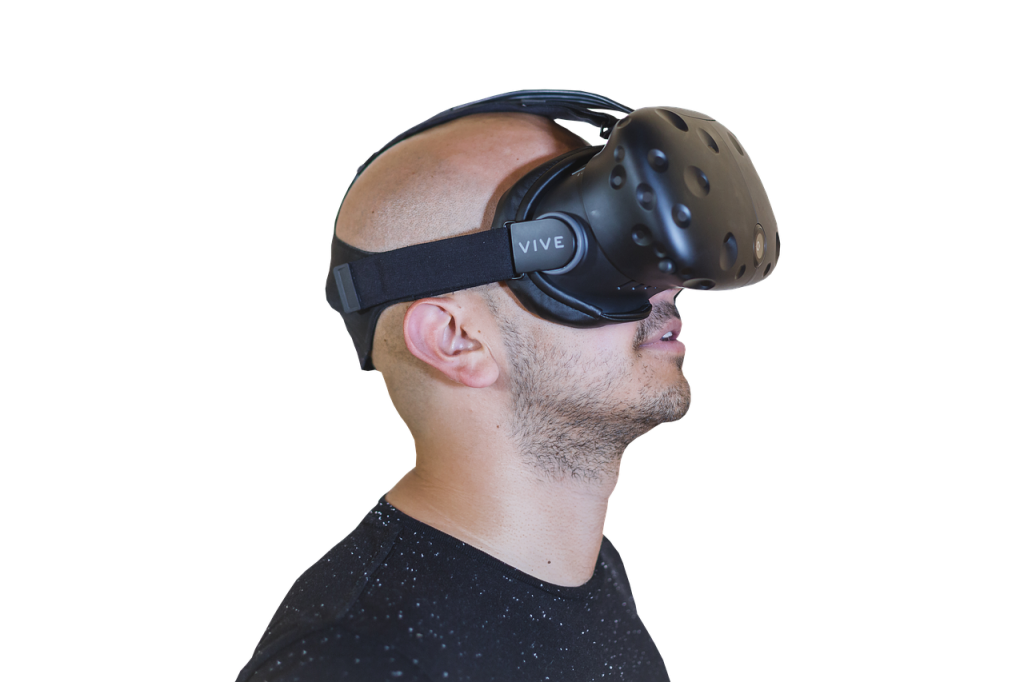The immersive, computer-generated VR technology in modern medicine is on a fast track to widespread use in the healthcare system. It has been proven to be exceptionally useful for treating mental disorders, as well as rehabilitation. The use of 3D visualization and VR technology in medicine has been used for some years now, as medical researchers have been exploring the use of VR since the 1990s by creating 3D models of patients’ internal organs.
Below are some of the most popular benefits of virtual reality used in modern medicine.

Better pain management
New and more advanced technology for medical use has been seeing the light in recent years, and virtual reality is no exception. A simple and interesting way of treating mental or physical health issues, as well as providing better ways to teach doctors and help with difficult operations. Companies providing VR therapy offer drug-free, personalized treatments that help patients deal with chronic conditions without having to leave their homes.
For example, VR treatment by XRHealth provides licensed therapists that work remotely using a VR headset and optimize the treatment in real-time. This makes patients more comfortable and confident to fight their health problems whether it’s about treating anxiety, depression, helping people with disabilities, or helping students concentrate better in school. VR helps patients get immersed in a VR scenario that helps fight off fears or endure painful procedures.
Flexibility
One of the greatest benefits of virtual reality is its flexibility. VR tech allows creating environments that can be life-like or unrealistic, to help patients deal with specific conditions. These environments can be accessed through a VR headset which is simple to use and very convenient, creating virtual places like an operation room, a beach, a boat in the middle of a lake, and such.
Flexible to change the environment depending on the patient’s condition, and customize it according to their needs. Also, it helps patients who cannot leave their house and gives them a sense of exploring the great outdoors without having to leave their comfortable home. It can be accessed anytime and anywhere which makes it an excellent tool for remote and risk-free treatment.
Reduces risk for patients and doctors
In this day and age, people are more prone to get virtual help instead of going to an actual hospital or clinic. This also helps reduce the risk of contracting infectious diseases, and not just for patients but also for their doctors. VR training, for example, gives healthcare professionals the ability to train without putting anyone’s life at risk. Surgeons can use VR training programs to gain experience in completing complicated surgery.
Also, emergency technicians can learn how to properly perform CPR without executing chest compressions on a real person. And not just for surgeries, healthcare professionals can also receive other training through VR, like learning about the human anatomy, the human brain, or the control of infectious diseases. Therefore students and medical professionals of various medical sciences can determine their level of competence before performing on an actual patient.
Patient education
Besides helping medical professionals, VR technology can also help patients learn more about diagnosis and medication, as well as understand procedures and tests. VR enables them to learn about clinical trials, making it an interactive experience decreasing distraction, and offering visualizations that can promote a better understanding of their health conditions.
Being able to treat and educate patients using VR can also help them recover faster. VR has proven to be quite influential on patients’ minds offering them artificial worlds as reality through hearing and sight. Various types of this immersive experience are helpful for people suffering from psychological disorders, chronic pain, disabilities, and other conditions.

Applicable in various healthcare areas
Because of its highly customized nature, virtual reality may be effectively used for several healthcare-related activities including surgical training, dentistry, patient consulting, and informing. VR also helps with diagnosing and relieving the symptoms for patients with Alzheimer’s disease, as well as helping patients with Parkinson’s disease improve their balance skills.
VR helps patients overcome conditions like stress, fear, depression, anxiety, or distraction by using distractions which helps them confront and overcome their problems. Virtual reality doesn’t necessarily have to focus on specific conditions and treatments, but as technology evolves, VR can also evolve and spread its benefits into other healthcare areas as well.
In closing
The visual impact of VR can be used to educate people on many diseases and conditions, but it can also help them deal with habits like smoking, alcohol, and drug abuse. The tech provides quality-of-life improvements for patients including those with dementia, severe disorders, and other psychological conditions. A drug-free and convenient way of treating patients is just the beginning of what the future for VR can be.

